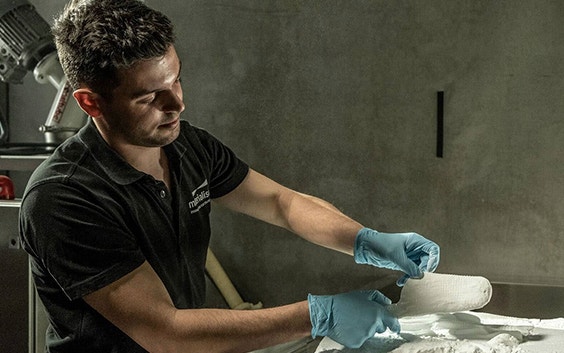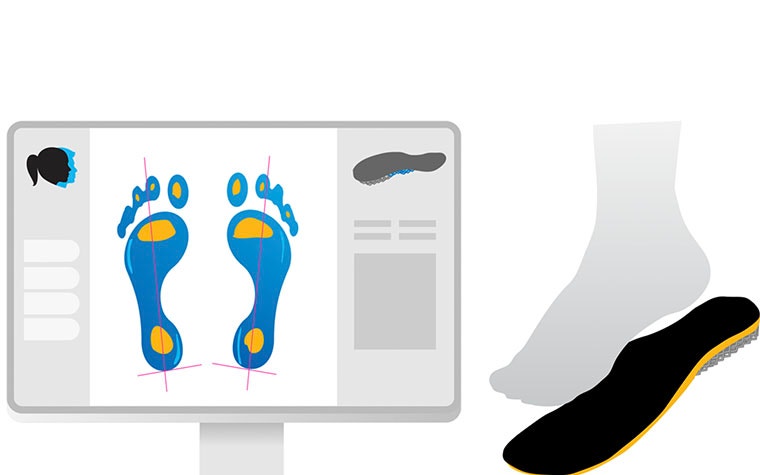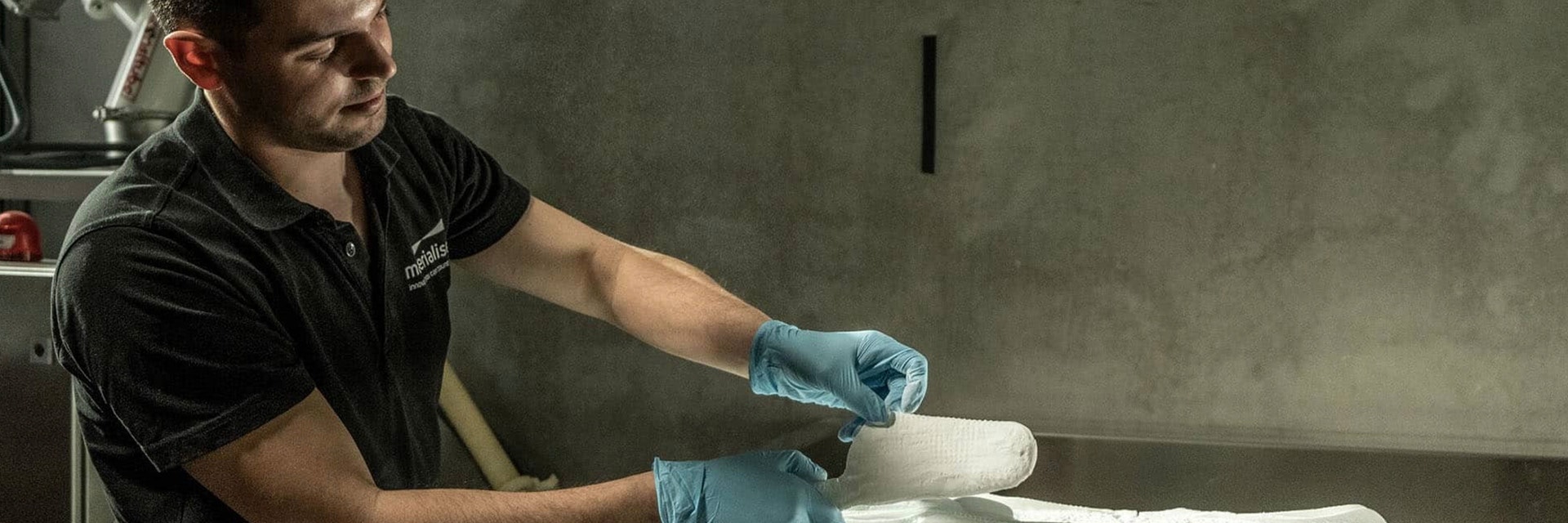CASE STUDY
phits: The World’s First Dynamic 3D-Printed Orthotic

You use your insoles when you’re on the move. But when it comes to making them, very few begin by measuring your foot in motion — traditional orthotic design starts with a static imprint. We’re ready to change that, with corrective insoles personalized not only to the shape of your foot but also to the way you move, step, and run. Meet phits™: the world’s first 3D-printed orthotics built using dynamic gait analysis.
Challenge
When RSscan and RS Print officially joined Materialise in 2020, it was with one goal. We wanted to continue to provide the world with orthotics that offered style, strength, and the unique support each patient needed. By combining dynamic data gathered through footscan pressure plates — cutting-edge data measurement tools and software — with our existing 3D printing software and manufacturing expertise, phits orthotics were officially born.
While the ability to design personalized orthotics was never in doubt, our first challenge was to ensure that we could bring them to life through an efficient and sustainable production process. Even for those working with traditional manufacturing, scaling and optimizing a production line is a daunting task — quality, reliability, and consistency in operations are key.
“Creating a certified additive manufacturing production line adds an additional layer of complexity,” explains Giovanni Vleminckx, Research Project Manager at Materialise. “Thankfully, Materialise has plenty of experience to call upon and the right tools for the job.”
Solution
The 3D printing of phits orthotics is the final stage of a simple three-phase process, as shown below. Once the foot and ankle experts have created their design based on their patients’ dynamic data, they can send the file to Materialise without ever leaving the footscan software interface.
Based on this file, the lightweight structures and design modification capabilities of Materialise 3-matic combine with our workflow automation software to automate the design while still allowing for input from the foot and ankle expert in a straightforward and user-friendly manner. This minimizes the human effort required to design the orthotics and ensures that the production team can provide a final product that’s fit for purpose.
The generated design is then transferred to the Materialise production facility through a cloud portal. Here, we use the Materialise Streamics system, connected directly to the portal, to manage the preparation and production of the orthotics. Machine scheduling and communication, automatic labeling, and ‘track and trace’ are just a few core capabilities of this system, ensuring that production is efficient, meets proper standards, and remains scalable long into the future.
Every phits orthotic is made from 100% recycled powder, with the final product guaranteed to be almost identical to the original design, no matter whether it’s printed once or several times. This is an added perk of working with 3D printing — it helps us reduce waste while the technology used is accurate down to 0.1 mm, ensuring every patient gets the corrections and fit they need and deserve.


Result
With an eye for optimization, we welcomed the expertise of our Mindware team to see what could be improved. One of the first challenges was to meet rising demand for phits produced in Belgium. To do this, our experts worked on getting more from our machines.
“We began by changing the entire scanning pattern, allowing the machines to scan the different cross-sections more efficiently,” Tom Craeghs, Research Manager at Materialise, tells us. “After scanning the contours of the orthotic, the team could now complete the scan with one pass of the laser rather than 200. This significantly reduced unit costs and time while improving accuracy due to fewer laser jumps and an increased marking speed.”
Similar changes were made to optimize nesting within the powder bed. By tweaking the orientation of the individual orthotics and reducing the spacing between them, productivity was instantly increased. But the input didn’t stop there — even the design was changed for the better.
“We encouraged some small changes to the design, such as reducing the beam sizes of the lattice structures,” Tom tells us. “This helped us optimize printability while keeping the original functionality of the finished orthotics, again helping to speed up production and reduce lead times.”
Together, these changes allowed us to accelerate growth and make our move into new markets. In the last four years, the production of phits orthotics has increased by more than 400% around the world, and this combination of software and expertise undoubtedly had a part to play. With an optimized process in place, we’re ready and excited for whatever the future holds.
Share on:
This case study in a few words
Consumer goods
Design automation and product management software
Selective laser sintering (SLS)
Materialise 3-matic
Materialise Streamics
Create an efficient and sustainable design and production process for custom orthotics based on a person’s movement
Improve orthotics with designs based on pressure points
Minimize hands-on human effort
Allow mass customization
Reduce waste
Bring corrective designs to life quickly and accurately
